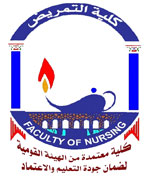Stoma creation has a great impact on patients' health related quality of life. Research aim: To assess the effect of health educational protocol on knowledge, practice and quality of life for two different age groups of colostomy patients. Research design: Quasi-experimental design (pre/post test) was utilized. Sample: Consisting of two different age patient groups with colostomy, the first age group represented middle – aged adults (20 - < 60), the second represented old adults (≥60). Setting: the study was conducted in Oncology Surgical Department and Outpatient Clinic of Oncology Institution at Sohag Hospital, Tools: three tools were utilized. Tool (I): Structured interview questionnaire included demographic & medical history assessment. Tool (II): knowledge & reported practice assessment for patients toward colostomy care. Tool (III): Stoma-Quality of Life Scale. Results: More than half of the patients in first age group (60.0%) had a good level of knowledge & reported practice post one month; while (72.0%) of patient in the second age group had a fair level with statistically significant difference P < 0.05 . Total quality of life mean score of the first age group was higher than second age group post, and follow-up of educational protocol application (74.33±8.14, & 72.47±5.44) compared with the second age group (72.8±9.63, & 70.04±5.65) with statistically significance difference P > 0.05. Furthermore a statistically significant correlation between QOL level and knowledge & reported practice level of patient in both age groups only post one month from protocol intervention (r = 0.123,0.546.) Conclusion: The educational protocol had positive effect on quality of life and increase knowledge & reported practice and for colostomy patients in two different age groups under the study. Recommendation: Studying the risk factors that affect the quality of life in two different age groups under study and the health outcomes of the colostomy patients
Research Date
Research Department
Research File
Research Journal
Assiut Scientific Nursing Journal
Research Member
Research Publisher
Assiut Scientific Nursing Journal
Research Vol
10
Research Website
http://asnj.journals.ekb.eg
Research Year
2022
Research_Pages
Page 253-263
Research Abstract

